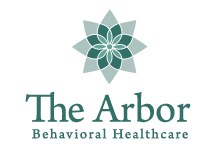Addiction and trauma go hand in hand. Many people who develop addictions have dealt with some sort of trauma in their lives. Trauma is a major risk factor for addiction, and self-medicating is very common. People may turn to substances to stop the feelings of sadness or anxiety that they are feeling. Arbor Behavioral Healthcare takes into account the whole person when treating their addiction. We look at the person’s background, which includes looking at the trauma that the individual has sustained. We believe in treating the underlying issue, not just the symptoms the person is exhibiting. Continue reading to learn more about addiction and trauma.
6 Key Principles of Trauma-Informed Care from the United States Substance Abuse and Mental Health Services Administration
1. Safety
Safety is the top priority for individuals who have an addiction and related trauma. We want you to feel safe, both physically and psychologically.
2. Trustworthiness and Transparency
We want to create a sense of trust between us and you. We also want a sense of trust between us and your family. We want to be clear in what we do, so there are no questions about our trustworthiness.
3. Peer Support
We also want to include peer support in our programs. You can benefit from peer support by learning that others have dealt with the things you are currently going through. This helps motivate you and gives others a sense of purpose. Soon, you can be the peer support for someone else in need!
4. Collaboration and Mutuality
Boundaries are an important aspect of recovery. We want to collaborate on boundaries that need to be set and come to an agreement on healthy boundaries.
5. Empowerment, Voice, and Choice
We want to build upon your past positive experiences and your strengths so that you have a voice in your treatment.
6. Cultural, Historical, and Gender Issues
We want to break down cultural, historical, gender, and any other stereotypes. Everyone deserves the greatest level of care. This is our promise to you. The 4 R’s in Recovery from the United States Substances Abuse and Mental Health Services Administration
1. Realization
Realizing that trauma can impact everyone in different ways is key. You must also realize that behaviors and coping strategies can go hand in hand.
2. Recognize
Recognizing the signs of trauma is another thing we can do to help treat someone that is in the middle of a traumatic experience.
3. Respond
Responding comes next since we need to respond quickly and correctly. We want to welcome those that need help into our programs.
4. Resist Re-Traumatization
Resisting re-traumatization helps us make sure that we are crafting a safe and healthy environment for our patients. The last thing we want to do is re-traumatize our patients.
Arbor Behavioral Healthcare is here to help you during this tough time of moving past your addiction and trauma. Call us today at (844) 413-2690. We can’t wait to get started with you.

